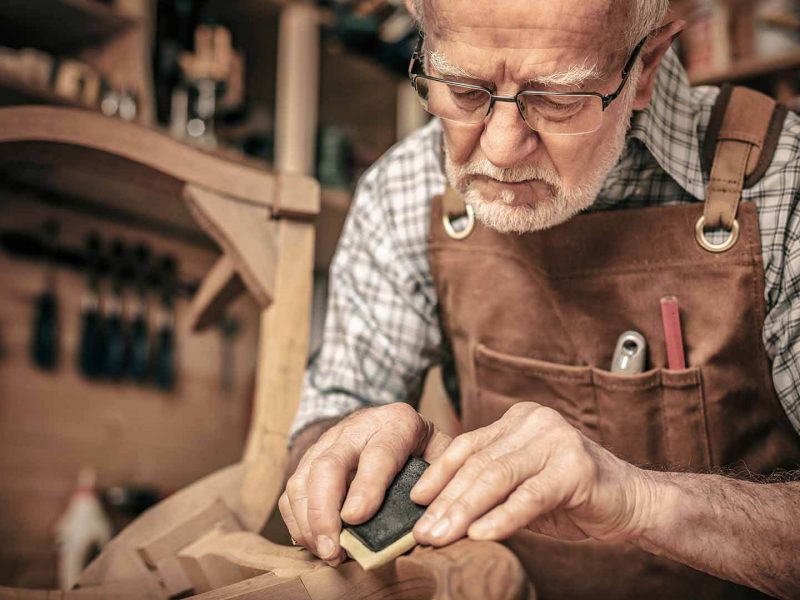Known as the memory of the World, Anatolia enlightens the present day with a history that spans thousands of years. Shaped by the Anatolian people, the art and culture is quite colorful. The Local Handcrafts in Anatolia live in workshops, cultural centers, fine art academies and non-governmental organizations. Some of the arts maintain their life and commercial activities through serial production with the latest technology.
We hereby will look at the local handcrafts reflecting the world of thought, beauty, lifestyle, difficulties, triumphs, and traditions of the Anatolian people.
The Art of Tile
Dating from the period of the Great Seljuk Empire and the Anatolian Seljuk Empire, the tile art is an exceptional handcraft using the soil as material. Even though the summit period was experienced during the Ottoman era, the figures and inspiration belonging to the Seljuk era come to the forefront in the tile art. Especially, the tiles in blue and dark blue both carry artistic and commercial values and reflect the lifestyle of the era. In particular, while the tile is preferred to decorate the walls of mosques, palace cabinets, pavilions and mansions, we also encounter the tile motifs in household items such as bowls, plates, spoons, cups, mugs, jugs and vases. İznik tile from Bursa is at the forefront.
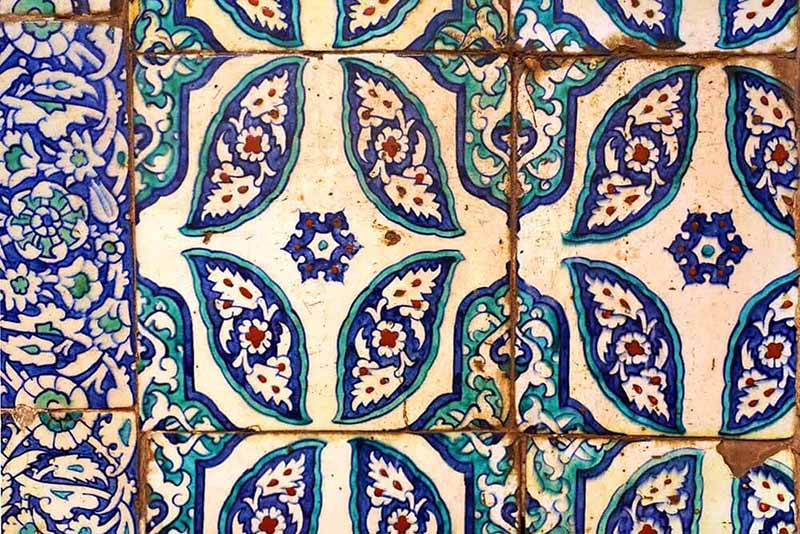
17th century Ottoman Turkish antique handmade tile motif from 1663 in Yeni Cami, Istanbul, Turkey.
Ottoman Glass Art
Although glasswork is mentioned during the Seljuk era in the history books, when glass art is mentioned, the 16th century and beyond usually come to mind. Glass art first appeared around the Sultanahmet Mosque and expanded in time and with special glass brought from Europe. The glass factory was established in Beykoz in the 19th century. At the present time, the glass factories and workshops in Beykoz export to countries all around the world. When the Ottoman glass art is mentioned, Nightingale’s Eye (Çeşm-i Bülbül) comes to mind first. In the Nightingale’s Eye, different shades of blue were used along with phases of melting, cooling, and shaping to show variety. In this way, colorful and gorgeous handcrafted glass vases, cups and pots have been produced.
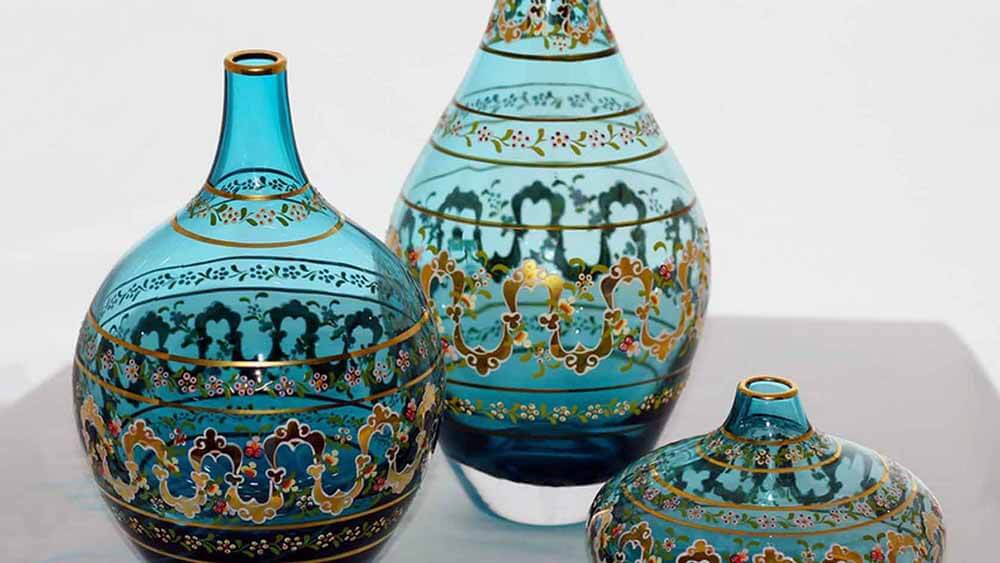
Although glasswork is mentioned during the Seljuk era in the history books, when glass art is mentioned, the 16th century and beyond usually come to mind.
The Art of Coppersmith
Copper finds from 10,000 years ago were seized in Anatolia, where the undergrounds are very rich in terms of mines. We may say that the art of coppersmith is almost as old as the history of humanity. However, the coppers that were processed during the Ottoman and Seljuk eras are the ones being exhibited in the museums. They capture attention with their elegant designs. The copper staffs that produced by “Forging” technique or “Pouring” technique are indeed manufactured as household goods. Bowls, cups, stoups, trays, and ornament items are often made of copper. Nowadays, in some places such as Grand Bazaar, copper handcrafts are still produced and these copper art products decorate many of the shop windows.
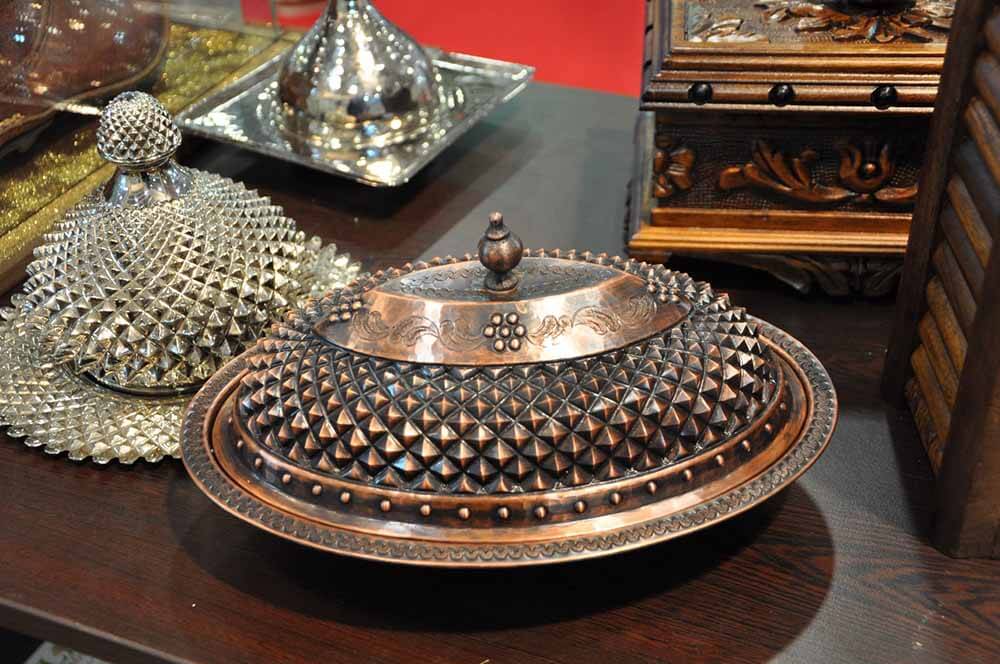
The copper staffs that produced by “Forging” technique or “Pouring” technique are indeed manufactured as household goods.
The Felt Art
Formed with wool and cotton fibers, the felt, with both high thermal insulation and high sound insulation, has been used by the Turks since Central Asia. These features of the felt provide benefits in building homes and tents, constructing walls, and producing clothes, shoes and thermal underwear. The hand-workmanship and motifs produced in the regions of Erzurum, Konya, and Manisa Akhisar especially draw attention. Colorful handcrafts with high artistic value are produced.
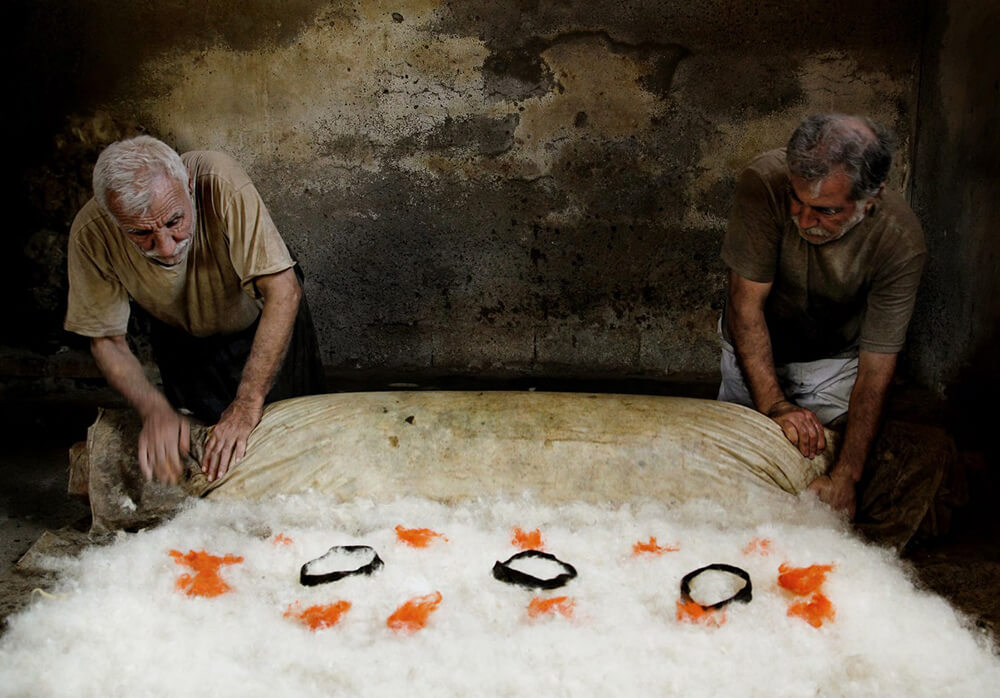
Felt (Keçe) masters
The Carving Art
Although the carving art sustained since Roman times is more known on the wood, it can be also performed on the mines and stones. By carving different motifs and ideas on the rigid material by means of tools like a spatula, both practical and ornamental products are obtained. In the carving art, while “low relief” or “high relief” methods are applied, different styles like “net carving technique” and “interlock carving technique” are being improved. This art shows itself especially on the wooden parts of mosques and palaces.
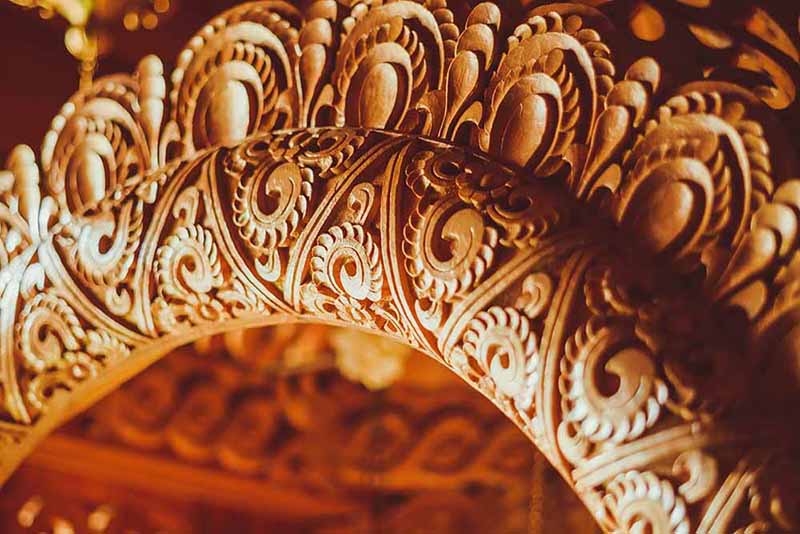
Woodcarving fragment of a wooden homemade casket closeup.
Kündekâri
Kündekâri is one of the arts that improved during the Seljuks era, and it experienced its summit period in the Ottoman era. Made of solid wood surfaces that interlock without nail or glue, Kündekâri is a different craft and art branch that using the very different techniques of woodwork. Geometric patterns such as pentagons, octagons and stars are combined by masters and wooden surfaces such as pulpits, lecterns, windows, cupboards, and doors are formed by these combinations. Particularly, the pulpits in the mosques draw great attention and are known as being work worth seeing. Wooden surfaces are obtained by using the techniques of “pounding-relief, pounding-gumming or relief”.

Kunderkari, Bursa, Ulu Camii.
The Weaving Art
The weaving art that is considered as the ancestor of the local handcrafts is a tradition which is maintained by the Turks since Central Asia. While weaving art is shown in carpets or rugs in some regions, in others it becomes saddlebags and cover sheets. In accordance with the geography and needs there, the weaving art has been performed by women, with an emphasis on color and different motifs.
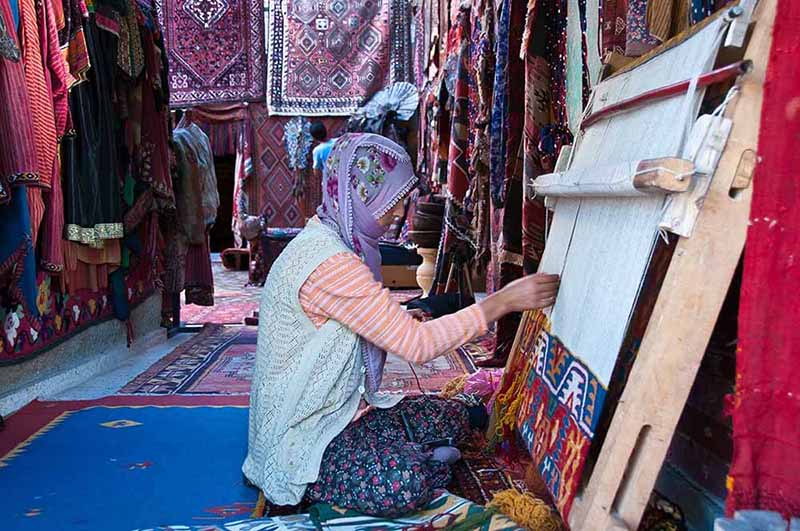
Local woman weaves a carpet by hand in Goreme, Turkey. This low-tech method has remained unchanged for centuries as one of the local handcrafts.

